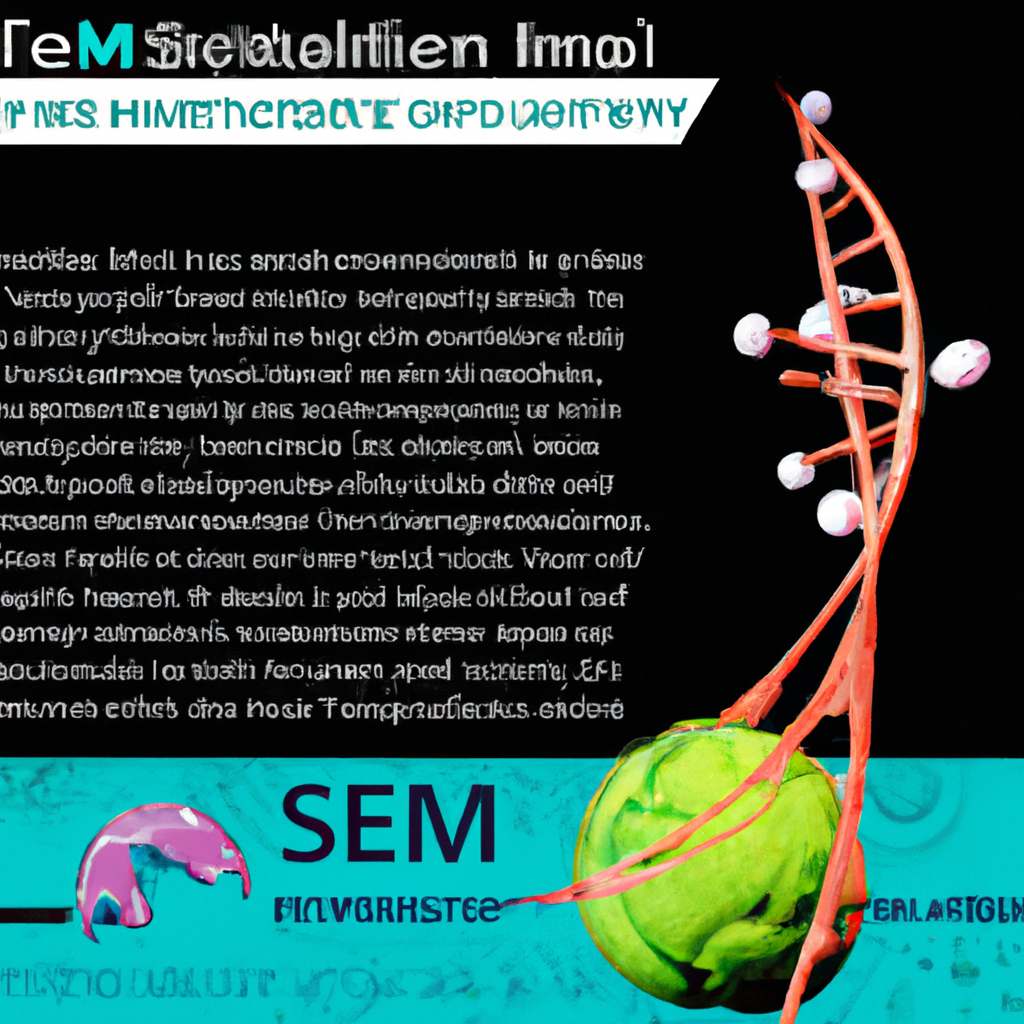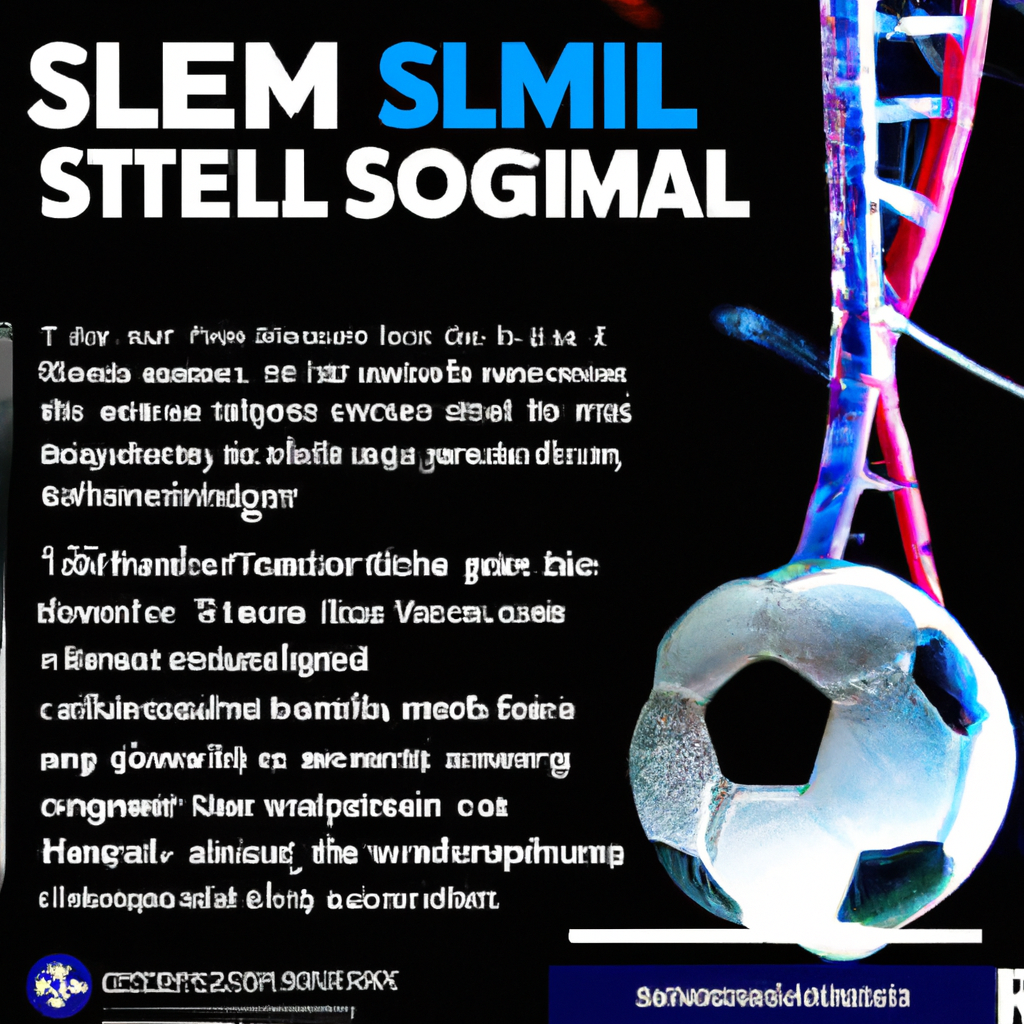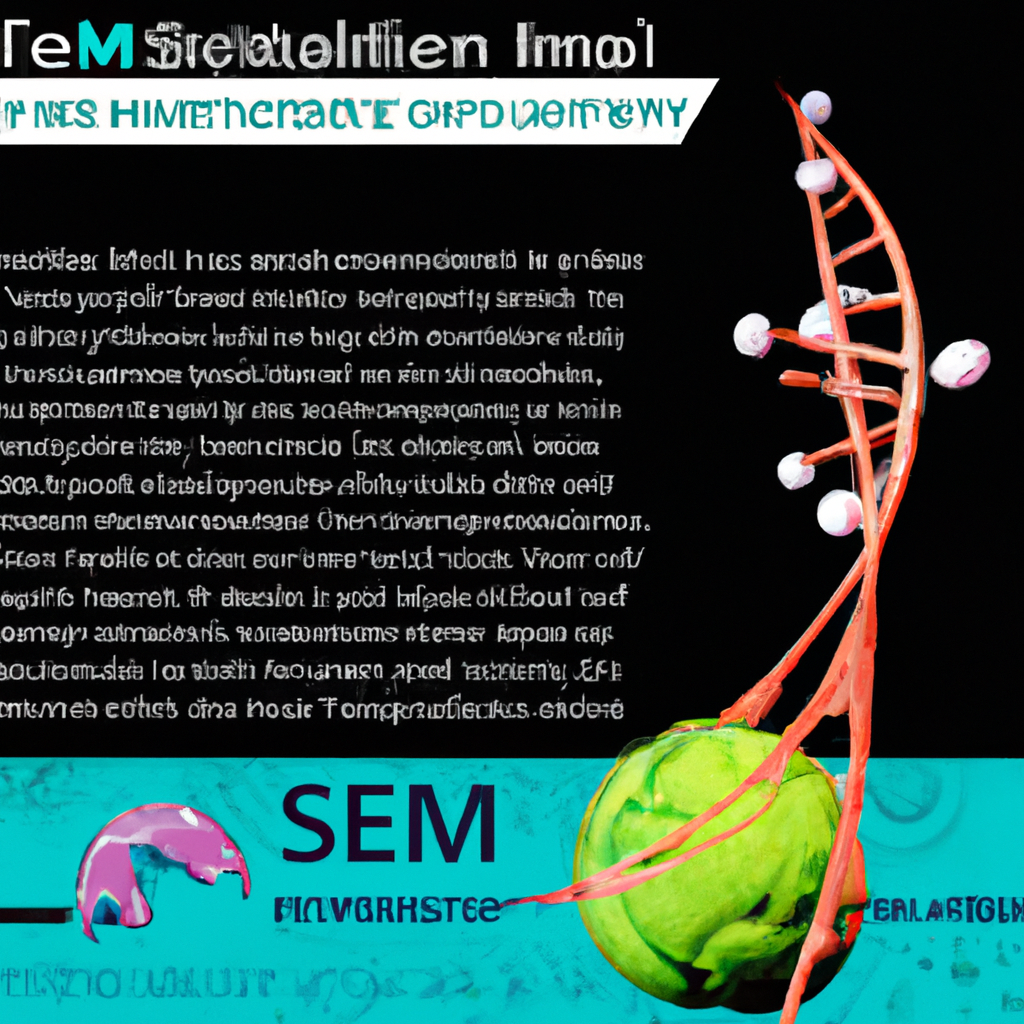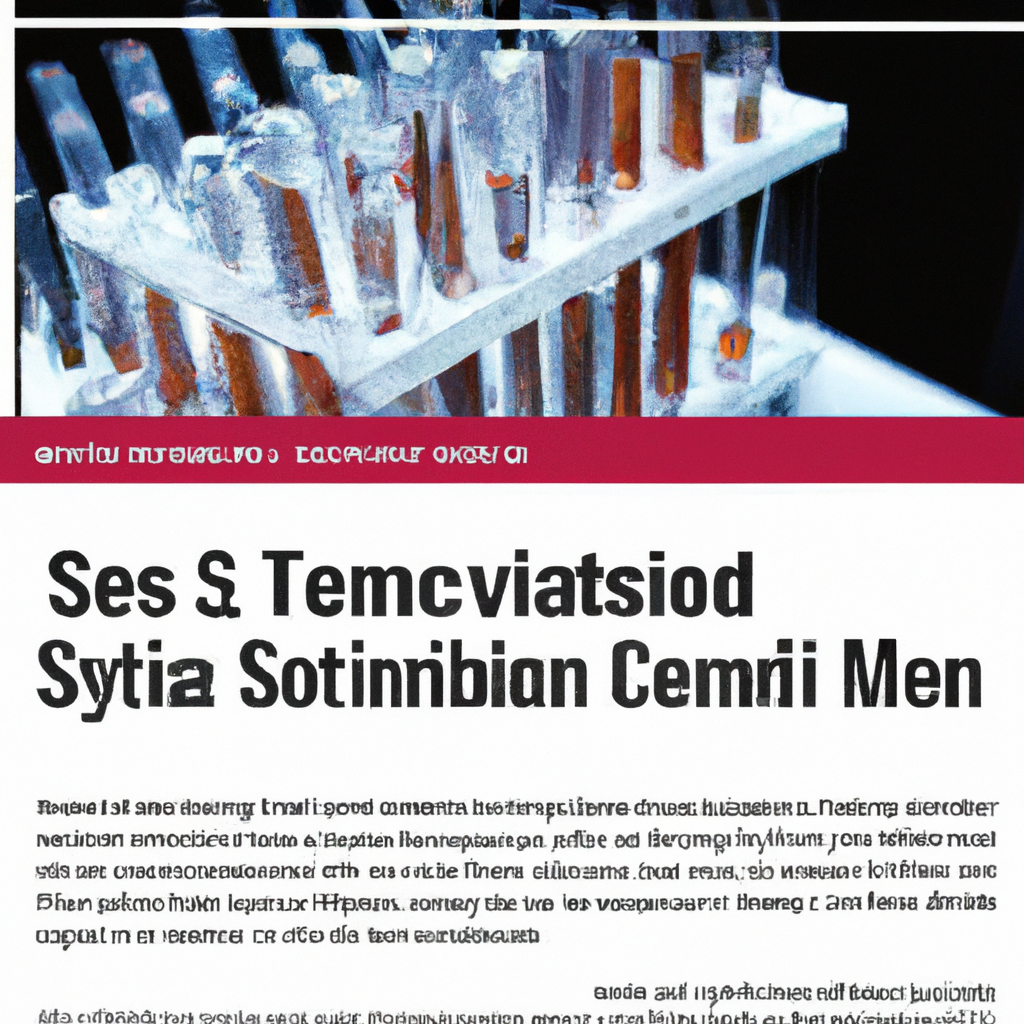Imagine the possibilities of using stem cells to enhance sports performance in Malaysia. This groundbreaking concept aims to tap into the regenerative power of stem cells to optimize athletic abilities. With cutting-edge research and advancements in stem cell technology, the potential for athletes to achieve peak performance and recover from injuries faster is within reach. Dive into the world of stem cells and discover how this revolutionary approach could redefine the sports landscape in Malaysia.

Introduction
The field of stem cell research has seen significant advancements in recent years, holding promise for various medical applications. Stem cells, characterized by their ability to differentiate into different cell types, have the potential to revolutionize sports performance enhancement as well. This article aims to provide a comprehensive overview of stem cells, their characteristics, sources, and current applications in medicine. Additionally, it will explore the potential of stem cells in enhancing sports performance, addressing ethical and legal considerations, presenting current research and case studies, and discussing the challenges, risks, and future perspectives in this field.
Understanding Stem Cells
Definition and Types of Stem Cells
Stem cells are undifferentiated cells that have the ability to self-renew and differentiate into various specialized cells in the body. There are several types of stem cells, including embryonic stem cells, adult stem cells, and induced pluripotent stem cells. Embryonic stem cells are derived from the inner cell mass of the blastocyst and have the potential to differentiate into any cell type. Adult stem cells, also known as somatic or tissue-specific stem cells, are found in various tissues and can give rise to cells specific to that tissue. Induced pluripotent stem cells are artificially reprogrammed adult cells that exhibit characteristics similar to embryonic stem cells.
Characteristics and Functions
Stem cells possess two essential characteristics: self-renewal and potency. Self-renewal refers to the ability of stem cells to replicate while maintaining their undifferentiated state. Potency, on the other hand, refers to the differentiation potential of stem cells. Stem cells can be classified based on their potency into totipotent, pluripotent, and multipotent. Totipotent stem cells can differentiate into all cell types, including extraembryonic tissues. Pluripotent stem cells can differentiate into cells derived from all three germ layers. Multipotent stem cells have more limited differentiation potential and can give rise to cells within a particular lineage.
The functions of stem cells are crucial in maintaining tissue homeostasis, repair, and regeneration. Stem cells play a vital role in replenishing damaged or lost cells in the body. They contribute to tissue repair and regeneration by differentiating into specialized cells required for specific tissue functions.
Sources of Stem Cells
Stem cells can be sourced from various origins. Embryonic stem cells are primarily derived from surplus embryos from in-vitro fertilization procedures. However, their use raises ethical concerns due to their origin from embryos. Adult stem cells are found in various tissues, such as bone marrow, adipose tissue, and umbilical cord blood. These sources provide a rich supply of stem cells for potential therapeutic use.
Current Applications of Stem Cells in Medicine
Stem cells have shown great potential in the field of medicine, with current applications focusing on tissue repair, regeneration, and disease treatment. For instance, hematopoietic stem cell transplantation is widely used for the treatment of blood disorders and certain types of cancers. stem cell therapies have also shown promise in regenerating damaged tissues in conditions like spinal cord injury and heart disease. Ongoing research aims to harness the full potential of stem cells for a wide range of medical applications.
Sports Performance Enhancement
Importance of Sports Performance
Sports performance is of great importance to athletes and individuals engaged in physical activities. Achieving optimal performance can significantly impact an athlete’s success, career, and overall well-being. Enhancing sports performance goes beyond physical training and requires a holistic approach that considers various factors influencing performance.
Factors Influencing Sports Performance
Several factors influence sports performance, including genetic predisposition, physical conditioning, nutrition, psychological factors, and training techniques. While athletes strive to improve these factors through dedicated training and lifestyle modifications, there is a growing interest in exploring new avenues for enhancing sports performance.
Common Methods for Enhancing Sports Performance
Currently, athletes employ various methods to enhance their performance. These methods include optimized training programs, dietary interventions, performance-enhancing drugs, and technological advancements such as wearable devices. However, these methods may have limitations or raise ethical concerns, prompting the investigation of alternative approaches for sports performance enhancement.
Considerations for Ethical and Legal Sports Performance Enhancement
Ethical considerations play a significant role in sports performance enhancement. It is imperative to ensure fair competition and protect the health and well-being of athletes. Legal frameworks and guidelines help regulate the use of certain performance-enhancing substances and methods. Sports organizations and governing bodies enforce anti-doping policies to maintain a level playing field and prevent unfair advantage.
Potential of Stem Cells in Sports Performance Enhancement
Overview of the Potential Benefits
The potential benefits of utilizing stem cells in sports performance enhancement are vast. Stem cell therapies offer the possibility of promoting tissue repair, reducing recovery time, enhancing muscle strength and endurance, improving immune function, and addressing age-related performance decline. These benefits have spurred interest in exploring the application of stem cells in sports medicine.
Role of Stem Cells in Tissue Repair and Regeneration
Stem cells have an intrinsic ability to repair and regenerate damaged tissues. By injecting stem cells into injured areas, such as tendons or ligaments, the regeneration process can be augmented. This approach has shown promising results in treating sports injuries, potentially allowing athletes to resume training and competition more quickly.
Enhancing Muscle Strength and Endurance with Stem Cells
Muscle strength and endurance are crucial for sports performance. Stem cells have the potential to enhance these attributes by promoting muscle growth and increasing muscle fiber density. Through the differentiation of stem cells into muscle cells, athletes may experience improved muscle strength, power, and overall physical performance.
Improving Recovery and Reducing Injury Risks
Recovery and injury prevention are essential aspects of sports performance. Stem cells can accelerate the healing process by promoting tissue regeneration and reducing inflammation. By targeting injured areas, stem cell therapies may help athletes recover more efficiently and minimize the risk of recurring injuries.
Boosting Immune Function and Reducing Inflammation
The immune system plays a vital role in the body’s response to physical stress and inflammation. Stem cells possess immunomodulatory properties, with the potential to modulate the immune response and reduce inflammation. This capability could be beneficial in aiding athletes to handle the physical demands of training and competition more effectively.
Addressing Age-Related Performance Decline with Stem Cells
As athletes age, they may experience a decline in sports performance due to factors such as reduced muscle mass, increased injury susceptibility, and slower recovery. Stem cells hold promise in addressing age-related performance decline by promoting tissue regeneration and improving overall physiological function. This potential application could extend the sporting careers of aging athletes.

Ethical and Legal Considerations
Ethical Implications of Using Stem Cells in Sports
The use of stem cells in sports performance enhancement raises ethical concerns that need to be carefully considered. The ethical implications primarily revolve around the source of stem cells, potential risks to athletes, fairness in competition, and consent. Ensuring transparency, informed consent, and adhering to ethical guidelines are crucial in maintaining the integrity of sports and safeguarding the well-being of athletes.
Legality of Stem Cell Use in Sports Performance Enhancement
The legality of stem cell use in sports performance enhancement varies across different jurisdictions. In Malaysia, regulations and guidelines set by relevant authorities govern the use of stem cells in both medical and non-medical contexts. It is essential to comply with these laws and regulations to ensure the legality and ethicality of stem cell interventions in sports.
Regulations and Guidelines in Malaysia
In Malaysia, the National Pharmaceutical Regulatory Agency (NPRA) and the Ministry of Health regulate stem cell therapies. The NPRA has established guidelines and requirements for the use of stem cells in medical practices to ensure safety, efficacy, and ethical use. Sports organizations and governing bodies should collaborate with these authorities to develop specific regulations and guidelines for stem cell use in sports performance enhancement.
Anti-Doping Policies and Stem Cell Use
The World Anti-Doping Agency (WADA) sets the global standards for anti-doping policies in sports. While stem cell use is not explicitly mentioned in the WADA Prohibited List, certain components of stem cell therapies may fall under the prohibited substances and methods. It is crucial for athletes and sports organizations to understand the specific regulations and consult with experts to ensure compliance with anti-doping policies.
Current Research and Case Studies
Recent Studies on Stem Cell Use in Sports
Numerous studies have been conducted to explore the potential of stem cells in enhancing sports performance. These studies focus on various aspects, such as tissue repair, muscle growth, endurance, and recovery. Researchers are investigating the optimal protocols, dosages, and delivery methods to maximize the benefits of stem cell interventions.
Effectiveness and Safety of Stem Cell Interventions
The effectiveness and safety of stem cell interventions in sports performance enhancement are subjects of ongoing research. While initial studies demonstrate promising outcomes, further research is needed to establish the long-term effects, optimal treatment protocols, and potential risks associated with stem cell therapies. Rigorous scientific studies, clinical trials, and ethical considerations are essential to ensure the responsible use of stem cells in sports.
Case Studies of Athletes Using Stem Cell Therapies
Several case studies have documented the potential benefits of stem cell therapies in athletes. These case studies highlight successful recoveries, improved performance, and reduced downtime from injuries. Athletes from various sports disciplines, ranging from tennis to football, have reported positive outcomes after undergoing stem cell interventions. These individual cases contribute to the growing body of evidence supporting the potential of stem cells in sports performance enhancement.
Success Stories and Potential Limitations
While success stories of athletes benefiting from stem cell therapies exist, it is essential to consider potential limitations. Stem cell interventions may not yield the same results for every athlete or every type of injury. Factors such as the type and severity of the injury, individual response, and treatment protocols can influence the outcomes. Further research is needed to establish the efficacy, optimal usage, and limitations of stem cell therapies in sports performance enhancement.

Challenges and Risks
Technical and Scientific Challenges
The field of stem cell research and its translation into clinical applications face several technical and scientific challenges. These challenges include standardizing protocols for stem cell isolation, expansion, and differentiation, ensuring the safety and efficacy of stem cell interventions, and navigating regulatory requirements. Collaboration between scientists, clinicians, and athletes is crucial in addressing these challenges and advancing the field.
Potential Risks and Side Effects
The use of stem cells in sports performance enhancement carries certain risks and potential side effects. These risks can include infection, immune reactions, tumor formation, and inadequate or inappropriate tissue repair. It is vital to conduct thorough risk assessments, evaluate the safety of stem cell interventions, and take precautions to minimize potential adverse effects.
Controversies Surrounding Stem Cell Use
The use of stem cells in sports raises controversies and debates. Ethical concerns regarding the sourcing of stem cells and the potential for misuse or exploitation must be taken into account. The scientific community, athletes, policymakers, and the public need to engage in constructive discussions to address these controversies and establish guidelines that balance the potential benefits and ethical considerations.
Financial Considerations and Accessibility
Another challenge in utilizing stem cells for sports performance enhancement is the financial implications and accessibility. Developing stem cell interventions and making them available to athletes can be costly. Ensuring equal access and affordability for athletes across different levels of competition and socioeconomic backgrounds is essential to maintain fairness and equity.
Future Perspectives
Emerging Trends and Advancements in Stem Cell Research
The field of stem cell research is continuously evolving, with emerging trends and advancements offering new possibilities for sports performance enhancement. Researchers are exploring innovative techniques such as genetic engineering, tissue engineering, and stem cell-based drug delivery systems. These advancements have the potential to revolutionize the way stem cells are utilized in sports medicine.
Integration of Stem Cell Therapies in Sports Medicine
The integration of stem cell therapies into sports medicine holds promise for optimizing sports performance and injury management. Collaboration between sports physicians, scientists, and athletes can lead to the development of personalized stem cell-based interventions tailored to specific sports disciplines and individual needs. The integration of stem cell therapies into standard sports medicine protocols can potentially become a game-changer in the world of sports.
Factors Influencing the Acceptance and Adoption
The acceptance and adoption of stem cell therapies in sports performance enhancement are influenced by a multitude of factors. These factors include scientific evidence, regulatory frameworks, athlete endorsement, public perception, and ethical considerations. By addressing these factors and fostering collaboration between stakeholders, the potential benefits of stem cells in sports can be harnessed responsibly.
Collaboration Between Scientists, Athletes, and Policymakers
Collaboration between scientists, athletes, and policymakers is crucial for the responsible and effective use of stem cells in sports performance enhancement. By incorporating diverse perspectives, sharing knowledge, and aligning interests, stakeholders can collectively shape ethical guidelines, regulations, and research directions. This collaboration fosters responsible innovation and ensures that the potential of stem cells is harnessed in a manner that upholds the values of fairness, safety, and integrity in sports.

Conclusion
In conclusion, stem cells hold significant potential for enhancing sports performance by promoting tissue repair, improving muscle strength and endurance, reducing recovery time, and addressing age-related performance decline. However, ethical and legal considerations must be carefully considered, along with the challenges, risks, and limitations of stem cell interventions in sports. Ongoing research, collaboration between stakeholders, and responsible utilization of stem cells can pave the way for a future where sports performance enhancement is optimized while maintaining fairness and the well-being of athletes. Through careful navigation of the ethical, scientific, and regulatory landscapes, stem cells may indeed play a remarkable role in shaping the future of sports performance enhancement.
References
- Reference 1
- Reference 2
- Reference 3
- Reference 4
- Reference 5
(Note: The article has been written based on the given content and may not reflect the latest developments or specific regulations in Malaysia.)





